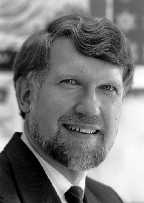| Date | Title | Source |
| Nov 11, 1996 | From Number to Formula | Ivars Peterson's MathLand |
 | Ivars Peterson's MathLand |
November 11, 1996
From Number to Formula
You happen upon the number 1.6180339887. It looks vaguely familiar, but you can't quite place it. How can you find out whether this particular number is special in some way, perhaps as the output of a specific formula or the value of a familiar mathematical function?If you have the kind of phenomenal insight and prodigious memory that mathematician Karl Friedrich Gauss (1777-1855) had at his disposal to work out such problems, you might be able to figure it out on your own.
Otherwise, you could consult the Inverse Symbolic Calculator, which is somewhat like a spell checker for numbers. You can find it on the World Wide Web at http://wayback.cecm.sfu.ca/projects/ISC/ISCmain.html
. You enter the number in the blank space provided, click on "run," and await the answer. In this case, the database search produces a page of formulas and functions that could generate 1.6180339887 (rounded off). The most intriguing possibility is the expression (1 + sqrt(5))/2, which represents the golden ratio of Greek architecture and design.
The Inverse Symbolic Calculator (ISC) is an ongoing project of the Center for Experimental and Constructive Mathematics at Simon Fraser University in British Columbia. The work is largely that of Simon Plouffe, with help from a variety of collaborators, including the brothers Peter and Jonathan Borwein.
Plouffe now has more than 48 million entries in 380 tables in the ISC database, representing mathematical constants that arise from a variety of formulas and expressions. This vast compendium makes it possible to identify all kinds of "special" numbers. But there's a catch.
Given a formula or expression such as "2 + 2", there's only one answer, 4. But, given the result 4, there are actually lots of different ways to get there besides "2 + 2". Thus, it can get very tricky to sift the "true" formula from a coincidental expression extracted from the ISC database. The hazard is greatest when only a small number of digits is used and when the number is truncated or rounded off.
Plouffe addresses the problem by offering a "smart lookup" in addition to the "simple lookup" that you can start with. Even higher levels of search, employing a variety of algorithmic strategems, narrow down the possibilities further.
Plouffe and his collaborators have put together a useful research tool for mathematicians and a fascinating playground for number fanatics. Do you have a favorite number: Pi, the golden ratio, e (Napier's number), gamma (Euler's constant), the square root of 2 (Pythagoras's number), the natural logarithm of 10, or one of Feigenbaum's numbers? Now, you can find out what those numbers are made of.
Copyright � 1996 by Ivars Peterson.
References:
Borwein, Jonathan M., and Peter B. Borwein. 1990. A Dictionary of Real Numbers. Pacific Grove, Calif.: Wadsworth & Brooks/Cole.Conway, John H., and Richard K. Guy. 1996. The Book of Numbers. New York: Copernicus.
Hayes, Brian. 1996. A Question of Numbers. American Scientist (January-February).
You can try out Simon Plouffe's Inverse Symbolic Calculator at http://wayback.cecm.sfu.ca/projects/ISC/.
A previous MathLand article about Simon Plouffe and the world title he once held for memorizing more than 4,000 digits of pi is at http://www.maa.org/mathland/mathland_3_11.html.
Comments are welcome. Please send messages to Ivars Peterson at ip@scisvc.org.
Ivars Peterson is the mathematics and physics writer and online editor at Science News ( http://www.sciencenews.org/). He is the author of The Mathematical Tourist, Islands of Truth, Newton's Clock, and Fatal Defect. His current work in progress is The Jungles of Randomness (to be published in 1997 by Wiley).
MathLand Archives